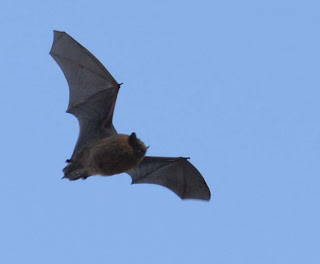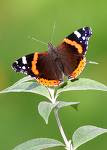 By Keith Larson
By Keith Larson On 18 May we departed from Lund University, southern Sweden, the destination, 61˚ north latitude along the Baltic coast of Sweden. Our goal was to trap willow warblers along several transects traversing a secondary contact zone for two subspecies spanning the center of the country from east to west. On this trip we would drive over 5000 km from the Baltic Sea in the east to the mountains on the border of Norway to the west and back trapping almost 400 birds at 30 sites in seven weeks!
The first transect was along the Baltic coast from Söderhamn to Umeå with trapping occurring at sites previously sampled between 1996 and 2004. From the first day we set our nets we noticed that our target species, despite being the most abundant species in Scandinavia, was less abundant than during our previous two trapping seasons. This year to reach our site sample size we had to work many more hours and trapped over larger areas. It had been a long cold winter and signs of summer were a long way off!
Most days started before sunrise with breakfast, packing the car, and driving forest roads all day long, sometimes until after sunset. Along the roads we were searching for patches of birch, the preferred habitat for willow warblers. Armed with an mp3 player and speaker we intruded into the territory of each male willow warbler we could locate. The song blasting from the speaker typically elicited an aggressive response from the owner. With good luck and a properly placed net the result was a bird in the net.
The first willow warbler in the net was a great moment each day. We collected biometrics, a little blood for genetic analysis, and a couple of feathers for stable isotope analysis. The bird was released with a ring and maybe now marked will be recaptured during migration somewhere between Sweden and Africa!
The habitats varied tremendously from site to site. The perfect patch is a dense stand of birch with low branches or an understory that will attract singing males from the canopy. We have learned that there is a distinctive phenology in behavior and differences in individual responses to intruders within territories that dictates how to use the playback system. Some birds only give you one chance to catch them. If they bounce out of the net or fly low and you have the net set the wrong way you might never catch them.
The second transect crossed from the Baltic coast to the mountains of Lappland. As we progressed to the northwest, the stands of birch increased in density as did the number of willow warblers. Here we were fortunate to capture two willow warblers ringed elsewhere, the first on migration in Sweden during the previous fall and the second in Poland. By the time we had reached the end of the transect on the border of Norway near Hemavan it was early June. The long winter still had its grip on the land as the lakes where still frozen, the birch just beginning to bud, and an occasional snow shower to remind us of its presence.
The third transect followed the Inlandsvägen or inland highway from Storumån (famous for its skiers, arm wrestlers, and the Wildman) to Mora (home of the famous Vasaloppet ski competition). Here we trapped often in vast areas of managed forest that required lots of patience and persistence to trap our sample size each day. As winter finally turned to spring the onslaught of mosquitoes arrived! Fortunately we had head nets and jungle juice to make our work tolerable; drive, find patch of birch, listen for willow warbler, use playback and mist-net to catch willow warbler, collect measurements and tissues, release bird, and repeat – 15 times each day!
The final transect was from Idre north to Lake Anjan through the fjäll or mountains along the border of Norway. Here we traversed the contact zone from south to north. The scenery was fantastic and with vast regions of birch forest the trapping improved each day as we moved north out of the managed forests. Despite the large amounts of high quality habitat, we still had the impression that the density of birds was much lower than the previous two years. As we trapped our last birds of the season near Vålådalen, we wondered how such a different year might affect the structure of the contact zone.
Willow warbler field crew: Max Lundberg, John Boss, Miriam Liedvogel, Sieglinde Kundisch, and Keith Larson
















